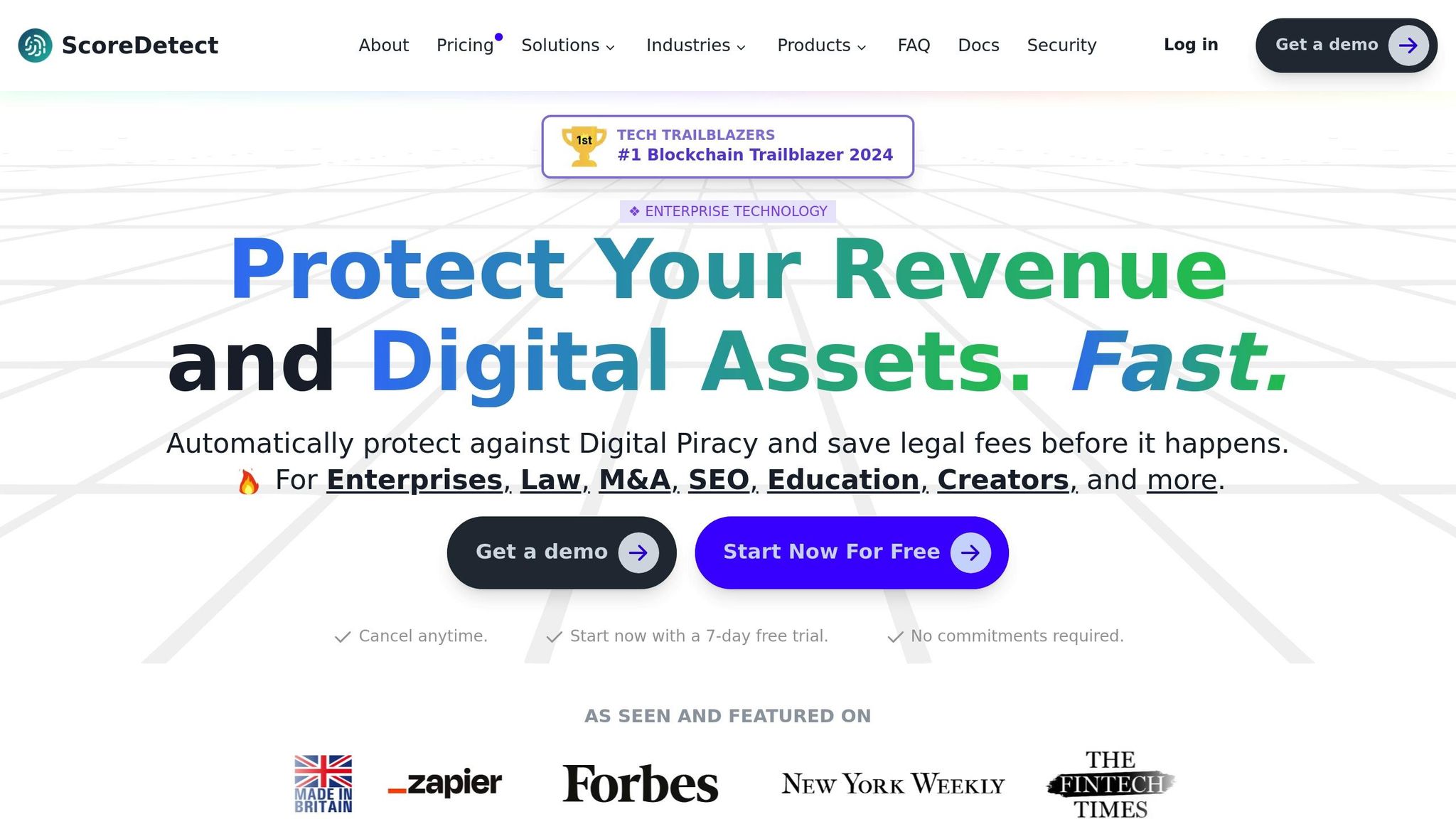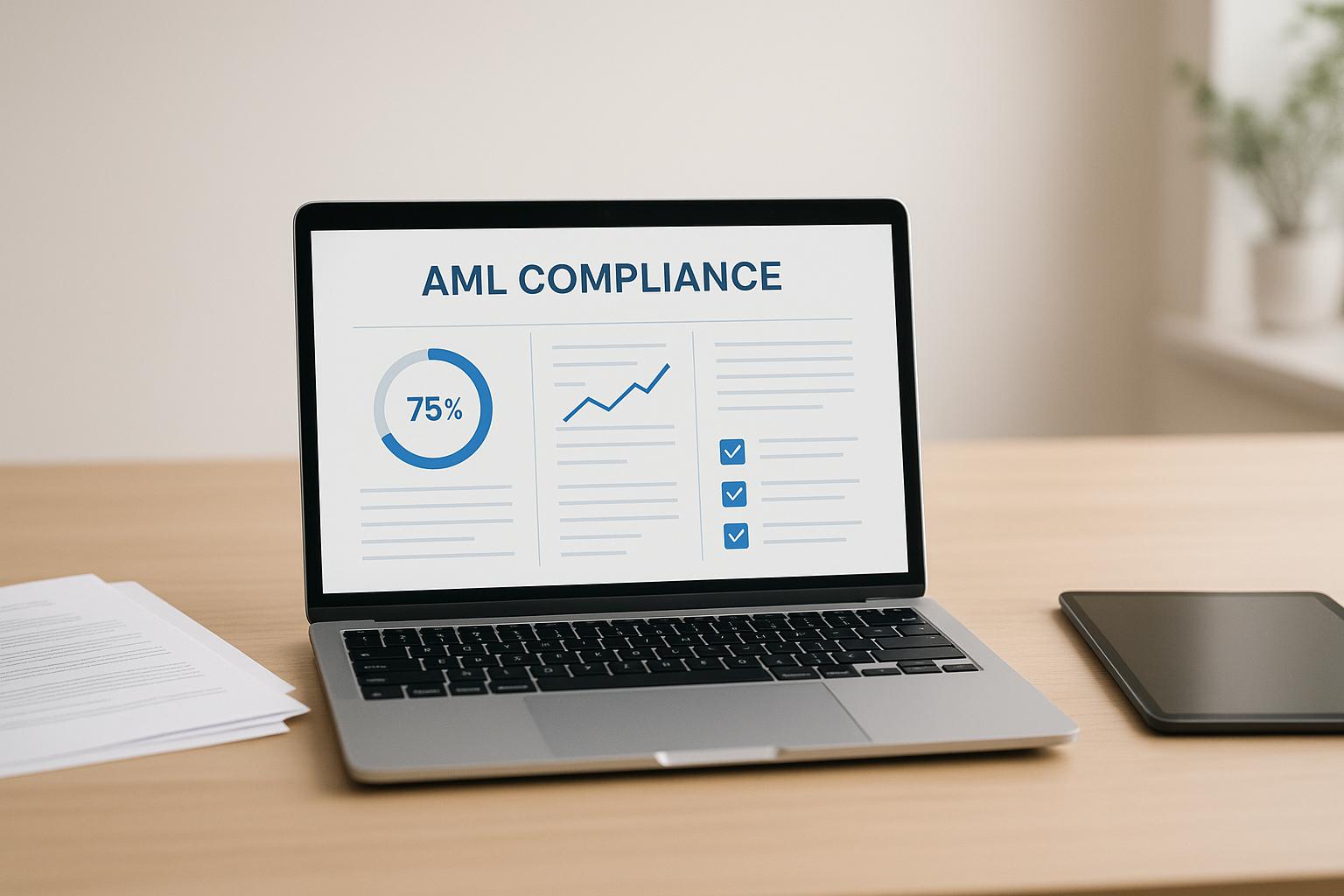Forensic audio watermarking embeds hidden, unique identifiers into audio files to track and protect them from piracy. These watermarks are inaudible to listeners but allow content creators to trace leaks, secure revenue, and provide legal evidence against copyright violations.
Key Points:
- Purpose: Protect intellectual property, combat piracy, and trace unauthorized use.
- Techniques: Spread spectrum watermarking and echo modulation preserve sound quality while embedding data.
- Applications: Used in entertainment, publishing, and corporate industries for tracking and legal verification.
- Challenges: Vulnerable to compression, noise, and manipulation; must comply with privacy laws.
- Example: Platforms like ScoreDetect use watermarking and blockchain to monitor and protect audio content with high success rates in identifying and removing pirated material.
This technology is crucial for safeguarding digital audio, ensuring creators maintain control over their work.
Technical Process
Watermark Embedding Methods
Forensic audio watermarking involves embedding hidden identifiers within audio files in a way that preserves sound quality. Two key techniques are commonly used:
- Spread Spectrum Watermarking: This method disperses the watermark across the audio spectrum, making it resistant to compression attacks. By keeping the watermark at low amplitudes, it remains inaudible but comes with a trade-off – limited data capacity [3].
- Echo Modulation: Here, watermark data is encoded using subtle, brief delays in the audio. These delays are imperceptible to listeners, ensuring the listening experience remains unaffected [3].
Notably, in March 2023, Ci Media Cloud and NAGRA introduced an Advanced Watermark Security package, highlighting advancements in this technology [2].
Watermark Detection Steps
Once a watermark is embedded, detecting it involves a systematic process:
- Initial Analysis: If unauthorized distribution is suspected, the leaked content is analyzed to identify possible watermark signatures [1].
- Service Provider Notification: The content owner submits both the original assets and the pirated version to a forensic watermarking service provider for further investigation [1].
- Secure Processing: The service provider examines the files in a secure environment, focusing on Content Armor metadata and other identifiers [1].
- Forensic ID Extraction: Using specialized tools, the watermark is extracted from the audio, revealing a unique forensic ID [4].
- Source Identification: The extracted ID is matched with user data and access logs to trace the source of the unauthorized distribution [1].
These methods are designed to withstand various challenges, including signal processing attacks and format conversions, such as digital-to-analog and analog-to-digital transformations [1].
Main Uses and Results
Piracy Prevention
Forensic audio watermarking plays a crucial role in combating digital piracy by embedding invisible identifiers into content. These markers can trace unauthorized distribution, acting as a powerful deterrent. For instance, in 2023, Ci Media Cloud joined forces with NAGRA to incorporate watermarking into Ci’s MediaBox. This collaboration helped protect thousands of videos through consistent forensic checks [2].
Legal Evidence
Forensic watermarking doesn’t just prevent piracy – it also strengthens legal cases. By embedding undetectable identifiers into content, it creates a direct, traceable link to the original source of any unauthorized distribution. This ensures concrete evidence in copyright infringement disputes, making it easier to hold violators accountable [5].
Industry Applications
Forensic watermarking is now widely adopted across various industries, serving both tracking and legal verification needs. Here’s a closer look at how it’s being used:
| Industry | Primary Applications | Key Benefits |
|---|---|---|
| Entertainment | Movies, TV shows, music streaming | Identifying sources of leaked content |
| Publishing | E-books, research papers | Monitoring unauthorized sharing |
| Corporate | Training materials, presentations | Ensuring proper third-party usage |
"Forensic watermarking is a significant breakthrough for the Academy, as well as for the entire film industry." [6]
One standout example is ScoreDetect’s watermarking system, which is both invisible and non-intrusive. It boasts a 95% success rate in discovering unauthorized content and a 96% takedown rate for illegal usage. These results highlight the effectiveness of this technology and pave the way for even more advanced protection solutions in the future.
Current Limitations
Technical Constraints
Forensic audio watermarking faces challenges in balancing three critical factors: durability, detection speed, and maintaining audio quality.
Here are some common types of audio manipulation and their effects on watermarks:
| Manipulation Type | Effect on Watermark |
|---|---|
| Compression | May strip away or weaken watermark signals |
| Downsampling | Reduces the accuracy of watermark detection |
| Additive Noise | Disrupts the ability to extract the watermark |
| Reverberation | Makes watermark detection more difficult |
| Packet Loss | Can corrupt or erase watermark data |
Embedding watermarks in speech signals is particularly tricky because of their limited spectral range. As Pindrop explains, "Watermarking has been proposed as a possible solution to the detection of synthetically generated or modified speech. While many methods were developed originally for music, they are not directly applicable to speech." [8]
Another pressing issue is the rise of AI-generated distortions. Deepfake audio has already been linked to alarming cases of fraud, including one incident where $243,000 was stolen using fake audio [10].
Legal Requirements
Beyond technical challenges, forensic audio watermarking must navigate complex legal landscapes. Compliance with regulations like GDPR, CCPA, and HIPAA is essential [7].
Organizations must also address the tension between securing content and maintaining user trust, especially when watermarked audio is used as legal evidence. As policy analyst Justyna Lisinska points out, "Imperfect protection offers little value, especially in urgent situations where audio watermarking provides no real defense." [9]
Some of the critical legal factors include:
- Privacy Compliance: Watermarking techniques must align with data protection laws.
- Evidence Standards: Watermarks need to meet strict authenticity requirements to hold up in legal settings.
- User Consent: Users must be informed about the use of watermarks, particularly when they serve as legal evidence.
The reliability of watermarks in court can be undermined by file alterations. Modifications that remove or distort watermarks could jeopardize their admissibility as evidence [9].
sbb-itb-738ac1e
ScoreDetect Features

Core Functions
ScoreDetect integrates subtle, invisible identifiers into audio content and uses blockchain technology to establish unalterable ownership records. By harnessing forensic audio watermarking, it provides a robust system for protecting and tracking digital assets with advanced content monitoring and verification tools.
Here’s a breakdown of its core watermarking features:
| Function | Description | Success Rate |
|---|---|---|
| Watermark Embedding | Embeds undetectable digital signatures | Imperceptible |
| Content Discovery | Utilizes AI-powered web scraping | 95% success |
| Unauthorized Use Detection | Matches content automatically | 96% accuracy |
| Blockchain Verification | Ensures tamper-proof ownership validation | – |
The platform’s blockchain technology ensures secure proof of ownership by using checksum verification to maintain content integrity. As Giuliano Neroni aptly puts it, “Empowering users with control over their digital identities is key” [13].
With these tools, ScoreDetect offers a comprehensive approach to safeguarding audio content, monitoring usage, and addressing unauthorized actions.
Protection Methods
ScoreDetect goes beyond embedding watermarks by actively scanning the web for potential misuse using automated acoustic fingerprinting. This system boasts a 95% success rate in identifying violations.
Here are the platform’s key protection features:
- Automated Detection
The platform employs acoustic fingerprinting to identify and match audio files across various platforms and formats [11]. - Take-Down Management
It automates the process of sending delisting notices, achieving a 96% success rate in removing unauthorized content. - Enterprise-Grade Security
ScoreDetect offers continuous monitoring, acting as a reliable security solution to protect digital audio assets.
The platform’s effectiveness is especially critical, given that 97% of all data breaches involve personally identifiable information [12]. By combining advanced technology with proactive measures, ScoreDetect ensures robust protection for audio content.
UOC’s Audio Watermarking System, High-fidelity recovery under extreme conditions
Summary
Forensic audio watermarking has become a critical tool in the fight against digital piracy, with the market poised for steady growth through 2032. Its adoption highlights its importance in safeguarding digital content across various industries.
This technology works by embedding unique, nearly invisible identifiers into audio files without affecting their sound quality [14]. Unlike older protection methods, forensic watermarking allows content owners to track unauthorized distribution back to its source, acting as both a preventive measure and an investigative tool.
A standout example is ScoreDetect, a platform that showcases the effectiveness of forensic audio watermarking. It boasts a 95% success rate in identifying unauthorized usage and a 96% success rate in content takedowns, underscoring the practical benefits of modern watermarking solutions.
The combination of forensic watermarking with blockchain technology has further strengthened content protection. Blockchain provides an unchangeable record of ownership, giving content creators and businesses a reliable way to protect their intellectual property while preserving the quality of their audio assets.
As digital content remains a cornerstone of the entertainment and media industries, forensic audio watermarking offers creators a dependable way to secure their work and maintain control over their digital creations.
FAQs
What is forensic audio watermarking, and how does it maintain audio quality while embedding identifiers?
Forensic audio watermarking is a method used to embed unique, hidden identifiers into audio files to safeguard them against unauthorized use or distribution. These watermarks are carefully designed to be inaudible, so they don’t interfere with the listening experience.
Techniques like spread-spectrum and transform domain methods make it possible to insert watermarks with minimal distortion. At the same time, these techniques ensure the watermarks remain strong enough to withstand compression, editing, and other forms of tampering. This approach protects digital audio while maintaining its original quality.
What are the legal considerations for using forensic audio watermarking in copyright infringement cases?
Forensic audio watermarking plays a key role in tackling copyright infringement, offering legally admissible proof of unauthorized use of audio content. By embedding unique, invisible markers into audio files, copyright owners can track and confirm the source of illegal distribution. This process establishes a solid chain of custody, which is crucial for presenting evidence in court.
In the United States, the Digital Millennium Copyright Act (DMCA) supports the use of technologies like forensic watermarking to safeguard intellectual property. For such evidence to hold up in court, watermarking techniques must align with copyright laws and be applied securely and reliably. This approach not only bolsters legal cases against violators but also enhances the protection of digital rights.
How does forensic audio watermarking stay effective against compression and tampering?
Forensic audio watermarking involves embedding durable, hidden watermarks directly into audio files. These watermarks are crafted to stay detectable, even after the audio undergoes processes like compression, format changes, or other modifications. Their design ensures they can endure typical audio processing without losing their integrity.
Cutting-edge techniques, such as embedding watermarks within compressed audio or leveraging AI-based tools, further improve their reliability and precision. This technology makes it possible to trace unauthorized use or tampering back to its origin, providing a dependable safeguard against piracy and misuse of digital audio content.

